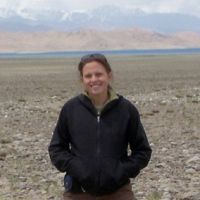Lukens
Spatial variations in the size distribution of sediment supplied to channels: A synthesis of detrital thermochronometry from 11 size classes in Inyo Creek, California
Lukens, C.; Shuster, D.L.; Sklar, L.S.; Riebe, C.S. (2016)
Fall Meeting, American Geophysical Union, December 2016. Abstract EP34A-02.
-
Sierra, GRAD STUDENT
-
Sierra, INVESTIGATOR
Abstract
Sediment acts as both an agent and a product of landscape evolution. In steep mountain landscapes, for example, the size and flux of sediment govern river incision into bedrock, serving as tools that are supplied to rivers with sizes and rates that ultimately depend on hillslope response to river incision. Both the size and flux of sediment produced on hillslopes are therefore central to the feedbacks between erosion, climate and tectonics that govern landscape evolution. Rates of sediment production and hillslope erosion can be readily inferred from cosmogenic nuclides in stream sediment. However, quantifying spatial variations in the sizes of sediment produced on hillslopes is more challenging. Here we use tracer thermochronometry to identify source elevations of sediment grains that have eroded into a stream. By applying this technique to many sediment sizes, we quantify spatial variations in sediment size produced on catchment slopes. We measured 40-90 individual apatite (U-Th)/He ages in each of 11 different size classes, from sand to boulders, sampled from a creek draining the steep eastern slopes of the Sierra Nevada, California. Age distributions indicate that both the smallest and largest sizes sediment sizes in the stream originate mostly from lower elevations, where slopes are gentler and soil-mantled. In contrast, coarse gravel and cobbles mostly originate higher in the catchment, where slopes are steeper and bedrock is exposed. We use ages from all 11 sizes to characterize spatial variations in the size distribution of sediment produced on hillslopes. We evaluate our results in the context of altitudinal variations in erosion rate, hillslope gradient, bedrock lithology, vegetation and duration of frost cracking. We discuss how our approach can be applied in steep mountain landscapes to understand feedbacks between erosion, climate and tectonics in landscape evolution.
Citation
Lukens, C.; Shuster, D.L.; Sklar, L.S.; Riebe, C.S. (2016): Spatial variations in the size distribution of sediment supplied to channels: A synthesis of detrital thermochronometry from 11 size classes in Inyo Creek, California. Fall Meeting, American Geophysical Union, December 2016. Abstract EP34A-02..
Explore Further


